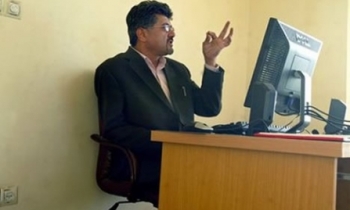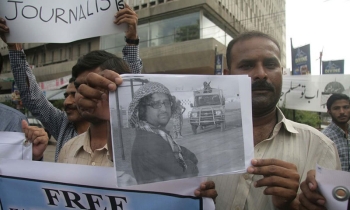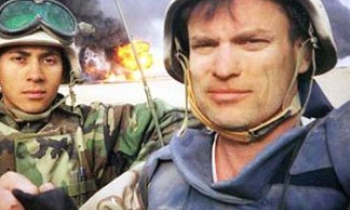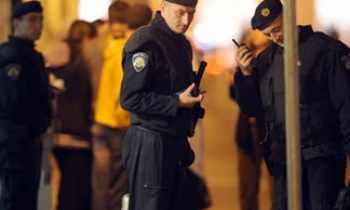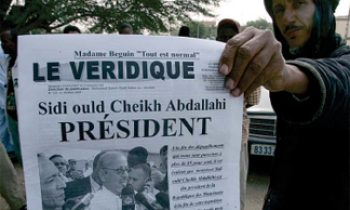Journalists and media workers of Jammu and Kashmir are operating in an
extremely difficult environment. The International Federation of Journalists (IFJ) in its report has provided an overview of the situation for journalists and the media working in India’s most volatile regions.
On December 7, a group of journalists were reporting on local perceptions on the ongoing election campaign in Kashmir’s town Sopore, when they were attacked by security personnel. Six among them suffered injuries, two rather seriously. The journalists were covering a street demonstration involving several local residents, mostly young people, who had come out in support of a campaign to boycott the state-wide elections.
The IFJ was informed that a senior police official instructed his men to beat the media personnel covering the demonstration, supposedly as a means of dispersing the protesters. Journalists at Kashmir’s Baramulla, were also told the same day to leave the area since their presence was supposedly inciting the local people into engaging in demonstrations and slogan-shouting.
Early in November 2008, the state government had sent an advisory to all media organisations within its jurisdiction warning against the “publication of certain objectionable materialâ€. Recipients were put on notice that they are to “refrain from publication of such objectionable and seditious materialâ€. Failure to comply would permit the government to “take action†under rules which allowed for the withdrawal of official advertising from non-compliant media organisations.
IFJ with the support of its affiliate organisations in India and the media community in Kashmir issued an appeal to the state government of J&K to de-link its advertisement placement policy from the editorial stance of particular newspapers.
Close to two decades since the militancy in Kashmir erupted, the media has gone through different phases in its fraught relationship with state agencies. In 1996, when elections were under way in J&K, the only means the media had to deal with the multiple pressures it faced was to shut down. In the 2002 electoral cycle, the media managed to function with relatively little pressure, since the contest for the first time seemed to offer the people of J&K choices that went beyond the parties officially sanctioned by New Delhi.
The 2008 elections are occurring in the aftermath of prolonged and widespread civil disturbances in the state, following controversy over the allotment of land in the Kashmir valley to a religious trust. Beginning with mass protests in the valley, the political crisis was qualitatively transformed when retaliatory actions began in the Jammu region.
On August 9, police seized all copies of an Urdu-language daily, Etalaat, for allegedly carrying a report of a village being razed by a mob in Jammu. State authorities warned staff at the English-language daily, Rising Kashmir, not to carry certain kinds of reports. The Jammu offices of another English-language daily, Greater Kashmir, were attacked by mobs.
A conclave of Kashmir valley’s most senior journalists resolved on August 9 that the state authorities should adopt a policy of complete transparency with the media and the general public in Kashmir about all ongoing incidents of violence and lawlessness in both the Jammu region and the Kashmir valley.
The situation deteriorated seriously and a blanket curfew was imposed in the Kashmir valley on August 23. Newspapers in Srinagar, failed to print for six consecutive days on account of severe restrictions on the movement of journalists and other media employees. Security agencies also compelled local cable news channels to suspend broadcasts or to air only entertainment programs.
Fifteen journalists and media workers were reported injured on August 24 in targeted attacks by personnel of the Central Reserve Police Force (CRPF), a paramilitary force controlled by the Indian Union Government deployed in Srinagar since 2005. The injured included journalists from India’s two main news agencies, the Press Trust of India (PTI) and the United News of India (UNI), who had been trying to go to their workplaces.
IFJ’s inquiries with journalists in Srinagar revealed that security forces persistently disregarded media accreditation cards and curfew passes, in some instances snatching and destroying them. Despite state government assurances that media accreditation cards would be considered good for passage through curfew-bound areas, security forces persistently disregarded these credentials during that turbulent period in Kashmir.
Three English language newspapers in Srinagar – Greater Kashmir, Etalaat and Rising Kashmir – posted notices on their websites regretting their failure to publish because staff could not travel to work. The Urdu language press was also paralysed. News websites during this period were updated sporadically only because some employees were confined to their offices by the curfew imposed in the entire Kashmir region.
One of the principal areas of concern is the relative concentration of the media community in the state’s two main cities: Jammu and Srinagar. Among journalists in Kashmir there is a recognition that the voice of the people, as reflected through the media, has been subdued to an extent. However, over the years the media community has evolved strategies of representing the local situation in a manner that has retained readers’ loyalty.
The main difficulty encountered by journalists in Kashmir is the overlapping of several narratives: the local, the national and the global. Linked to this is the narrative that emerges from Pakistan’s longstanding political intervention in Kashmir, and that country’s seemingly unending turbulence.
The state and the security agencies are a major source of news in Kashmir. Journalists are often under compulsion to report in accordance with the state’s views. This sets up an ethical conflict in terms of professional practice, since the inputs received from official sources are often at variance with the points of view that the press gathers from its interactions at the local level.
In reconciling these conflicts, the media community in Kashmir maintains the tough language of confrontation. It has been a long and hard process of negotiations, but because of the high international visibility of the Kashmir issue and the greater degree of scrutiny under which agencies in the state function, the authorities have yielded ground.
This ongoing process of negotiation does not ensure the security of journalists. In many ways, the threats that journalists face from insurgent groups are more difficult to deal with, because it is quite often out of their hands to meet the stringent conditions on reporting that this side of the conflict imposes.
These tensions begin with the basic vocabulary of conflict reporting, in the choice between the use of “dispute†or “problem†and between “terrorist†or “militantâ€. Journalists’ dispatches are commonly edited, headlined and laid out on the page by colleagues in distant centres such as Jammu and New Delhi, who may not be aware of the daily compulsions faced by colleagues working on the ground.
The militancy imposes its own restrictions on journalists and the media, which often amount to censorship. News reports that inconvenience militant groups and, in particular, call into question the commitment of Pakistan to the cause, are severely restricted. Commonly faced with the threat of lethal force for reporting in a manner that displeases one side or the other, journalists opt for self-censorship rather than truth-telling.
There are numerous cases of journalists being harassed and threatened by both sides in the conflict. However, the two deaths recorded in the State in recent months – of press photographer Ashok Sodhi on May 11 and news videographer Javed Ahmed Mir on August 23 – were the consequence of being caught in the crossfire in armed encounters.
Despite recurrent threats, Kashmir’s media continues to grow. From just 5 newspapers published in Jammu and Srinagar two decades ago, there are now more than 20. Another feature of media growth in Kashmir has been a proliferation of “news agenciesâ€. These are typically one-person operations in district towns, which serve as freelance news-gathering resources for newspapers in Srinagar.
The absence of salary structures and insurance cover for journalists and media workers is yet another serious concern. In addition, in certain areas, such as Uri and Tangdar, are out of bounds, even for journalists. The “agents†who perform news gathering in these areas typically service numerous clients in Srinagar and work under conditions of extreme stress.
There is an association of journalists in Kashmir but its membership is modest in relation to the community that it seeks to represent. Differences in perception on what a professional body can achieve in Kashmir account for the failure of the existing body to achieve wider enrolment.



